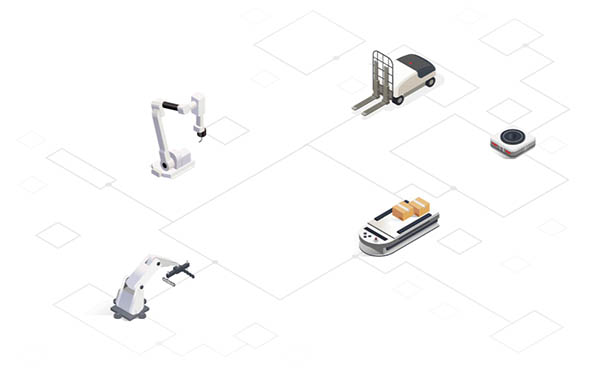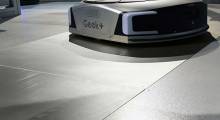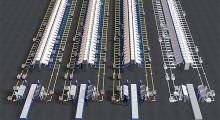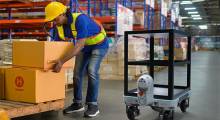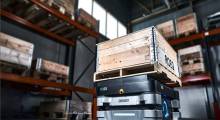Software maker MOV.AI announced today it is working with lidar technology company Ouster to outfit autonomous mobile robots, or AMRs, with digital lidar sensors.
Based on the Robot Operating System (ROS), MOV.AI’s Robotics Engine Platform “provides robot manufacturers with out-of-the-box tools and infrastructure to develop unique, easy-to-deploy AMR software at a fraction of the time and cost,” according to the company's website.
It includes a visual integrated development environment (IDE), off-the-shelf algorithms and integrations, and fleet management. MOV.AI said its platform also includes cybersecurity compliance and flexible interfaces with warehouse management systems (WMS) and enterprise resource planning (ERP) software.
Complementary technologies to make AMRs more nimble
With the demand for intralogistics services skyrocketing, warehouse environments are becoming increasingly dynamic and dense, argued Tel Aviv, Israel-based MOV.AI. Mobile robots need to be able to navigate and move around autonomously in tall, narrow aisles, with frequently changing inventory and very few fixed physical features to guide them.
San Francisco-based Ouster said it is combining its high-resolution lidar data with the MOV.AI Robotics Engine Platform, advanced simultaneous localization and mapping (SLAM) navigation, obstacle avoidance, and risk-avoidance systems. The companies said they will help AMRs operate efficiently and continuously in dynamic environments, environments with little static information, and environments with repeated structures.
“MOV.AI's mission is to speed up robot development and to provide AMR manufacturers and integrators with everything they need to develop and operate great robots,” said Motti Kushnir, MOV.AI's CEO. “Through our partnership with Ouster, we are able to offer our customers autonomy solutions that work seamlessly in environments with a limited field-of-view and physical features.”
Lidar tech lets robots map entire warehouse
The OS0 sensor's ultra-wide vertical field of view allows mobile robots to map the entire warehouse environment, from floor to ceiling, in real time, said Ouster. Autonomy algorithms can use this data to help AMRs safely and efficiently navigate throughout the warehouse, it said.
“Digital lidar is great for warehouse automation due to its high-resolution, wide field of view, and reliability,” said Aaron English, head of product marketing for industrial and robotics at Ouster. “It can provide incredibly precise 3D spatial information that just isn't possible with legacy laser scanning systems, cameras, or radar alone.”
“Reliable data is what enables the robots to move safely and efficiently in dynamic environments,” he added. “The industry is at a tipping point for automation, which is why we're excited to be partnered with MOV.AI as they scale adoption of their Robotics Engine Platform.”
The global warehousing and storage market could grow from approximately $450 billion in 2021 to $605 billion in 2027, estimated IMARC. Demand for material handling and warehouse logistics is driven by the dramatic growth of e-commerce, where U.S. online sales, for example, were up by 32% in 2020.
Article topics
Email Sign Up

